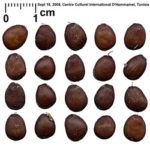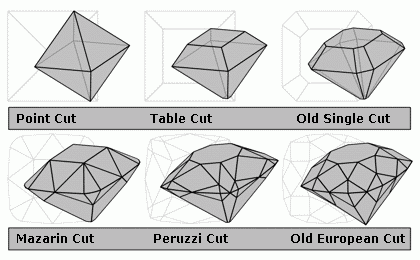![]() Gemstones and other rare earth metals are primarily made of solid particles. For that matter, their amounts are scientifically measured through units of weight. These units, such as kilograms, grams, pounds and metric tons are extensively used and therefore, people have a fair idea about them.
Gemstones and other rare earth metals are primarily made of solid particles. For that matter, their amounts are scientifically measured through units of weight. These units, such as kilograms, grams, pounds and metric tons are extensively used and therefore, people have a fair idea about them.
However, when it comes to measuring the weight of a gemstone, all these prevailing units prove to be way bigger. For instance, barring exceptions, you can’t find gemstones in grams, let alone other larger units. Therefore, the gem industry has standardized a different weight unit to quantify gemstones to assess their value. This unit is called ‘carat’.
Since the carat is exclusively used in the gem industry, many people don’t know what this unit entails. In this article, we are going to discuss it in detail so that you are better aware when dealing with gems.
The Connection between Carat and Carob Seed
Like many existing systems with their roots in interesting historical anecdotes, the story of carat coming into existence is also an intriguing one. It is said that some gem traders somewhere in the 16th and 17th century decided to set the value of precious stones in proportion to their exact weight. During that time, businesses were run without any established unit system for any type of measurement.

Traders who used to work in the African marketplace are aware of carob seeds. The interesting bit regarding these seeds is that all of them are identical in their shape, size, and mass. Carob seeds were once part of a staple diet of many African nations because of its rich sugar content.
The uniformity of carob seeds sparked the idea to use them as counterweights for precious and small items i.e. gemstones. There use in a balance scale as a counterweight became quickly popular because of the reliability provided by the consistent shape and weight of carob seeds. Soon after this experiment, it became a norm in the gem industry to weigh gemstones against carob seeds.
After the advent of sensitive weighing machines, it was found that a single carob seed approximately weighs 200 milligrams. Meanwhile, the pronunciation of ‘carob’ had also been distorted with its use as a weighing unit in different parts of the world. After some years of this standardization, people had started calling it ‘carat’. So, when it was formally reorganized as a weight unit at the beginning of the 20th century, it was given the name ‘carat’, the distorted term which had become more popular than the original term.
Carat or Karat
It is really important to discuss the confusion surrounding these two words with the same phonetics. The term ‘karat’ is mostly associated with gold, which is not a gemstone but revered and valued as one.
To put in simple words, karat is an arbitrary unit used to measure the purity of gold. Pure gold is considered 24-karats. Since pure gold is extremely soft and malleable, it is mixed with other minerals (copper, nickel etc) for stabilization. Coins, jewelry and other gold items that we usually see are not made of a pure specimen. Let’s try to understand karat and its distinction from carat through numbers.
An 18-karat gold item is made of a 75% pure mineral. This means 18 parts of gold is mixed with six parts of other minerals to stabilize the contrived object. In a similar manner, every object made of gold is divided into 24 parts to measure its purity. A 12-karat gold specimen would include 12 parts of pure gold and 12 parts of stabilizing minerals.
Therefore, karat and carat are not one and the same. Karat is not a weighing unit and neither is it used for any material except gold. But carat is a standardized metric unit of mass and the entire worldwide gem trade uses it to weigh and value precious stones.
Subdivisions of Carat
Not all gemstone are equal in their exhibition and value. A carat of opal can’t be equal to the same weight of an emerald or ruby. And then there is a gem of all gems i.e. diamond. People who have brought this king gemstone in the form of jewelry would be well aware of the value of a carat of diamond.
In most of the diamond rings, the stones used are way less than one-carat. For that matter, jewelers have subdivided one carat into 100 pointers. A single pointer is equal to two milligrams. If a diamond cut weighs 0.25 carat, it can be referred to as a ‘twenty-five pointer’ stone.
Diamonds and Carats

The Craze of Magic Sizes
In terms of their carat weight, diamonds also come in some ‘magical sizes’. Diamond cuts with the definite carat measurements are usually referred by this term. For instance, one-carat, half-carat, and even three-quarter carat diamonds are called magic sizes and have a price higher than the regular specimens with arbitrary carat or pointer measurements. Diamonds can run into hundreds of thousands of dollars and even millions. Their price all depends upon their cuts, color, clarity and their weight in carats.
The craze among gem lovers with respect to magic sizes can be understood by the fact that a one-carat diamond specimen can be 20 percent more expensive than a 0.99-carat cut. It is important to mention here that both these specimens look exactly the same in ornamental objects and even an expert can’t tell them apart without measuring their weight.
